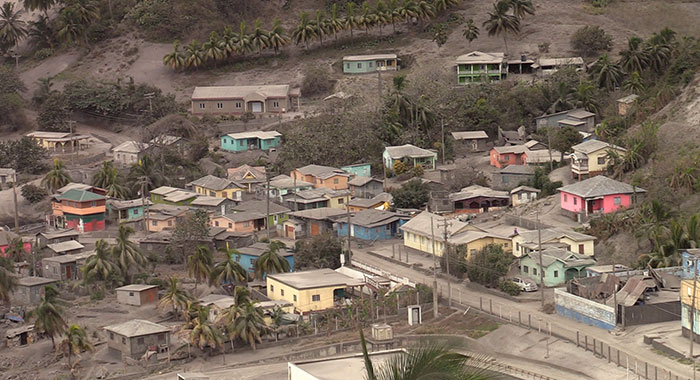Residents of northern St. Vincent, including communities north of the Rabacca Dry River, will be allowed to return to their homes, when the eruption of La Soufriere ends and the all-clear is given.
Prime Minister Ralph Gonsalves said on NBC Radio, on Friday, that there are persons who say that the communities in the Volcano Red Zone in the northeast, as well as Orange Zone communities in the northwest, should be abandoned and reserved for agriculture.
He, however, rejected this view, saying, “… as far as I am concerned, as far as the ULP (Unity Labour Party) is concerned, north of the [Rabacca] Dry River, that’s the soul of this nation — Garifuna and Calinago and all what they represent.
“Similarly places like Rose Bank and Petit Bordel and Fitz Hughes and Chateaubelair with Garifuna people.”
On April 9, after three months of effusive eruption, La Soufriere erupted explosively, 15 hours after an evacuation order was issued and just four days shy of the 42nd anniversary of its 1979 eruption.
The volcano has been erupting since, with the last explosion coming shortly after 11 a.m. on Friday — hours after Gonsalves’ comment.
Geologist Professor Richard Robertson, the lead scientist monitoring the volcano, says that the eruptions could last for up to a year.
The Red Zone in eastern St. Vincent encompasses Georgetown and all the communities to its north and north of Fitz Hughes on the west of the island — where there are no built-up areas except for a few buildings in Richmond.
As of Wednesday, the volcano had displaced at least 13,154 people — the number of persons who have registered with the National Emergency Management Organisation (NEMO).
Of that total, 6,208 persons or 156 families were staying at 85 public shelters in the safe zone and 6,790 persons representing 1,618 families were in private residences.
Livelihoods, agriculture, housing, as well as public and private infrastructure in the Red Zone have been significantly affected by the ongoing eruption.
“I tell people, just like in 1902, people migrated. People themselves, if they find it’s too dangerous, they will make decisions,” Gonsalves said.
The prime minister said he knows there’ll be lots of discussion on the issues and people would have their opinion.
“… and you can say what you want to say but I have mine and at the moment, the bulk of the people up there want to go back and who wants to make abstract discussions can have them but I am not in that part of the discussion.
“If you want to partner with me and the people to rebuild up there better, I am here willing to partner with anybody, so I just want to put that unmistakably clear,” the prime minister told listeners.
He said that there is likely to be a population shift after the eruption, as was the case when after the 1902 and 1979 eruptions.
“… and we will address that migration pattern with all the consequences for health and education and so forth. But don’t ask me to say that we must not go back and rebuild North Windward, particularly over the Rabacca River, which is where the bulk of the damage would have taken place and Chateaubelair, Fitz Hughes, Richmond.
“Don’t ask me not to rebuild because they will be rebuilt and so long as God gives me strength and I am where I am, I will make every effort so to do, and I want to make that point absolutely clear,” he said.
NEMO says that the Red Zone represents an area of “very high hazard” and is expected to experience maximum damage in the short term, and is the zone where all hazardous events have their greatest influence.
“It is defined by the zone of expected total destruction from pyroclastic flows, surges and mudflows and by the zone of maximum expected damage from all projectiles. This zone is likely to experience more than 30 cm of ash. During the course of an eruption, this zone would be unsuitable for human habitation,” NEMO said in 2007 when a detailed volcanic hazard map was published.
The Orange Zone, on the other hand, represents an area of high hazard.
This includes all areas of moderate pyroclastic flow and surge hazard, areas within the 5km projectile zone, and areas likely to experience between 10 and 30 cm of ash fall. The potential for damage may be similar to zone 1, but the greater distance of villages from the volcanic centre would reduce the likely impact. These areas will be affected in a similar manner as the Red Zone during large-scale eruptions.







This is the same man who pushed the narrative that the Diagnostic center in his constituency was positioned in the most suitable area to best serve all Vincentians. This man has been able to give poor people nothing of substance for 20 yrs and convince them that he’s giving them gold..he told poor people that St Vincent under his ULP administration was the envy of the rest of the Caribbean..You fooled me once, shame on you.you fooled me twice , shame on me .This man needs to stop preying on and exploiting the vulnerable and poor people of SVG. NDP needs to do a better job at holding this man accountable for his misdeeds.
Beloney.
That Garifuna card is played very conveniently eh?
I really think Dr Gonsalves should register and display his title deed as the sole owner of the people and island of St Vincent and the Grenadines at the UN.
Two thumbs up for you Dr Gonsalves! You are doing the best you possibly could.May God bless you and give you more strength to carry on! Brenford Johnny Lyttle.